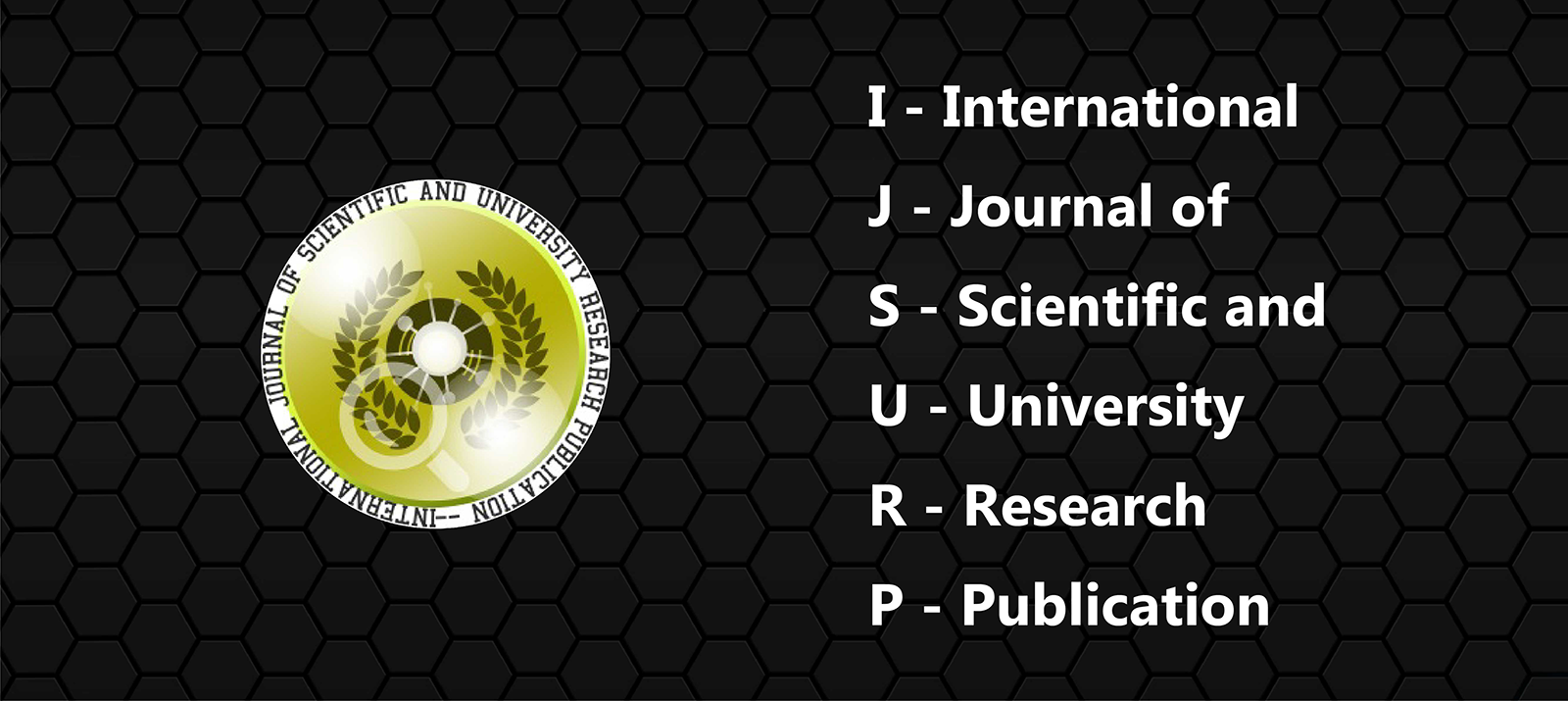
Measuring Understanding of Electron Distribution of Atoms among Pre-service and In-Service Physical Science Teachers Using Representational Task
Authore(s) : Dela CruzJonathan Daved D. || Technological University of the Philippines
Volume : (8), Issue : (11), May - 2020
Abstract : Representation is to symbolize, to depict as, and to help describe an idea that reinforces the descriptive, symbolic and recognizable role of representations in explanations. Representations, which are not literal interpretations nor considered as the real thing, are used in chemistry depicted as models, analogies, equations, graphs, diagrams, pictures and simulations. These representations serve as essential avenues of measuring the extent of understanding in the disciplinal content as alternative to traditional assessment methods (Lansangan, 2018). Kozma (2003) proposed a conceptual structure showing representational competence into characteristic patterns of representational use at five stages or level, which was the basis of the current study in constructing representational tasks for measuring understanding of the electron distribution of atoms. The study employed the mixed-method sequential explanatory design. The representation task rubric was developed, validated and pilot tested to 30 Pre-service physical sciences students and 30 in-service physical science teachers. Both quantitative and qualitative data collected substantiate the conclusion that the task feasibly corresponds to the rubrics developed. Among the respondents’ takeaway of the experience is about the importance of organizing and re-organizing their thoughts on the concepts and pictures out the idea, giving importance in checking and correcting misconceptions, measuring their level of understanding and reflecting on how to improve their understanding on the topic
Keywords :Science representations, Conceptual structure, Electron distribution of atoms
Article: Download PDF Journal DOI : 220/530
Cite This Article:
Measuring Understanding of Electron Distribution of Atoms among Pre-service and In-Service Physical Science Teachers Using Representational Task
Vol.I (8), Issue.I (11)
Article No : 10225
Number of Downloads : 100
References :
Andrew, S. (1998). Self-efficacy as a predictor of academic performance in science. Journal of Advanced Nursing, 27, 596-603.
Ausbel, D.P. (1968). Educational Psychology: a cognitive view. Holt, Rinehart and Winston, New York.
Bhushan, N., and Rosenfeld, S. (1995). Metaphorical Models in Chemistry. Journal of Chemistry Education 72(7), 578-582.
Bunce, D.M. and Gabel, D.L. (2002). Enhancing chemistry problem-solving achievement using... More
- Andrew, S. (1998). Self-efficacy as a predictor of academic performance in science. Journal of Advanced Nursing, 27, 596-603.
- Ausbel, D.P. (1968). Educational Psychology: a cognitive view. Holt, Rinehart and Winston, New York.
- Bhushan, N., and Rosenfeld, S. (1995). Metaphorical Models in Chemistry. Journal of Chemistry Education 72(7), 578-582.
- Bunce, D.M. and Gabel, D.L. (2002). Enhancing chemistry problem-solving achievement using problem categorization. Journal of Research in Science teaching. 28(6), 505-521.
- Cosgrove, M., and Schaverin, L. (1997). Models of Science Education. In J.K. Gilbert (ed), Exploring models and modeling in science and technology education (pp 20-34). Reading UK: The University Reading.
- Farida, I., Widyantoro, D.H. Spandi, W. (2010). Representational Competence Profile of Pre-service chemistry teachers in Chemical Problem Solving. International Seminar of Science Education.
- Kozma, R. (2003). The use of multiple representations and social construction of understanding in chemistry. Innovations in Science and mathematics Education: Advanced Designs for technologies of learning (pp.11-45) Mahwah, New Jersey: Erlbaum.
- Kozma, R., Russell, J., Jones, et.al (1996). The use of multiple, Linked representations to facilitate science understanding. International perspective on Psychological foundations of technology-based Learning Environments. Lawrence Erlbaum Associates, Inc., 41-60.
- Lansangan, R, Orleans, A. & Camacho, V.M. (2018) Representational competence of secondary chemistry students in understanding selected chemical principles. Journal of Science Teachers and Educators, Vol. 1.
- Madhusoodanan, J. (2016). Science Illustration: Picture Perfect. Nature, 534, 285-287.
- Novak, J.D. (1991). Clarify with Concept Maps. The Science Teacher, 58(7), 44-49.
- Pinto, R. & Ametller, J. (2002). Students’ difficulties in reading images. Comparing results from four national research groups, International Journal of Science Education, 243, 333-341.
- Papageorgiou, G., Markos, A. & Zarkadis, N. (2016). Understanding the atom and relevant misconceptions: students’ profile in relation to three cognitive variables. Science Education International. 27(4), pp. 464-488.
- Seel, N.M. (2003). Model-Centered Learning and Instructions. Technology, Instruction, Cognition and Learning, 1, 59-85.
- Sevarkoditon, A. & Parimalafatima, M. (2014). Assessing the Effectiveness of Scientific illustration as learning tool in the classroom through self-regulated. Journal of research and method of education.
- Singh, S. &Yaduvanshi, S. (2015). Constructivism in Science Classroom: Why and How. International Journal of Scientific and Research Publications, Volume 5, Issue 3, ISN 2250-3153.
- So, Winnie Wing-Mui. (2002). Constructivist Teaching in Primary Science. Asia-Pacific Forum on Science Learning amd Teaching, 3(1).
- Von Zeipel, H. (2014). Illustrations in Science Education: An Investigation of Young Pupils Using Explanatory Pictures of Electrical Currents. Procedia – Social and Behavioural Sciences 167 (2015) 204-210.
- Wu, H., Krajcik, J.S., Soloway, E. (2001). Promoting Understanding of Chemical Representations: Students’ Use of Visualization Tool in Classroom. Journal of research in Science Education, 38(7), 821-843.
... Less
- Andrew, S. (1998). Self-efficacy as a predictor of academic performance in science. Journal of Advanced Nursing, 27, 596-603.
- Ausbel, D.P. (1968). Educational Psychology: a cognitive view. Holt, Rinehart and Winston, New York.
- Bhushan, N., and Rosenfeld, S. (1995). Metaphorical Models in Chemistry. Journal of Chemistry Education 72(7), 578-582.
- Bunce, D.M. and Gabel, D.L. (2002). Enhancing chemistry problem-solving achievement using problem categorization. Journal of Research in Science teaching. 28(6), 505-521.
- Cosgrove, M., and Schaverin, L. (1997). Models of Science Education. In J.K. Gilbert (ed), Exploring models and modeling in science and technology education (pp 20-34). Reading UK: The University Reading.
- Farida, I., Widyantoro, D.H. Spandi, W. (2010). Representational Competence Profile of Pre-service chemistry teachers in Chemical Problem Solving. International Seminar of Science Education.
- Kozma, R. (2003). The use of multiple representations and social construction of understanding in chemistry. Innovations in Science and mathematics Education: Advanced Designs for technologies of learning (pp.11-45) Mahwah, New Jersey: Erlbaum.
- Kozma, R., Russell, J., Jones, et.al (1996). The use of multiple, Linked representations to facilitate science understanding. International perspective on Psychological foundations of technology-based Learning Environments. Lawrence Erlbaum Associates, Inc., 41-60.
- Lansangan, R, Orleans, A. & Camacho, V.M. (2018) Representational competence of secondary chemistry students in understanding selected chemical principles. Journal of Science Teachers and Educators, Vol. 1.
- Madhusoodanan, J. (2016). Science Illustration: Picture Perfect. Nature, 534, 285-287.
- Novak, J.D. (1991). Clarify with Concept Maps. The Science Teacher, 58(7), 44-49.
- Pinto, R. & Ametller, J. (2002). Students’ difficulties in reading images. Comparing results from four national research groups, International Journal of Science Education, 243, 333-341.
- Papageorgiou, G., Markos, A. & Zarkadis, N. (2016). Understanding the atom and relevant misconceptions: students’ profile in relation to three cognitive variables. Science Education International. 27(4), pp. 464-488.
- Seel, N.M. (2003). Model-Centered Learning and Instructions. Technology, Instruction, Cognition and Learning, 1, 59-85.
- Sevarkoditon, A. & Parimalafatima, M. (2014). Assessing the Effectiveness of Scientific illustration as learning tool in the classroom through self-regulated. Journal of research and method of education.
- Singh, S. &Yaduvanshi, S. (2015). Constructivism in Science Classroom: Why and How. International Journal of Scientific and Research Publications, Volume 5, Issue 3, ISN 2250-3153.
- So, Winnie Wing-Mui. (2002). Constructivist Teaching in Primary Science. Asia-Pacific Forum on Science Learning amd Teaching, 3(1).
- Von Zeipel, H. (2014). Illustrations in Science Education: An Investigation of Young Pupils Using Explanatory Pictures of Electrical Currents. Procedia – Social and Behavioural Sciences 167 (2015) 204-210.
- Wu, H., Krajcik, J.S., Soloway, E. (2001). Promoting Understanding of Chemical Representations: Students’ Use of Visualization Tool in Classroom. Journal of research in Science Education, 38(7), 821-843.






